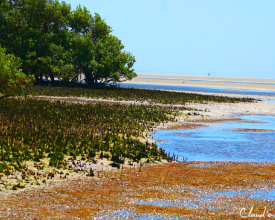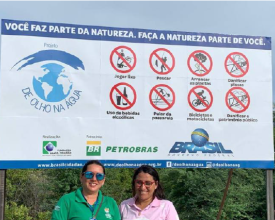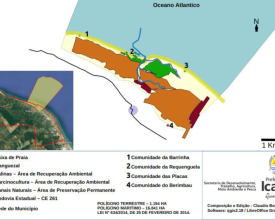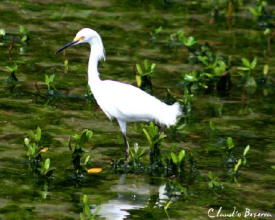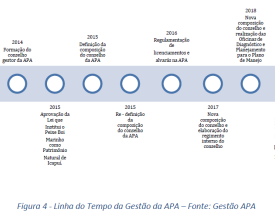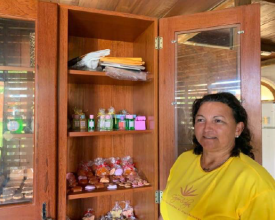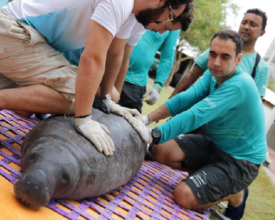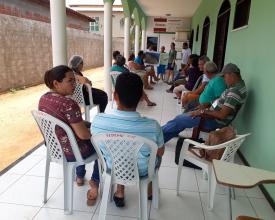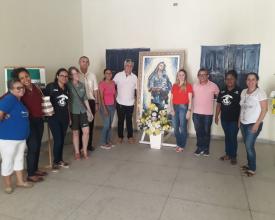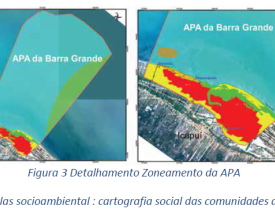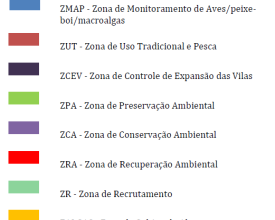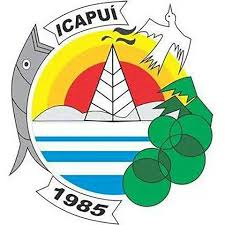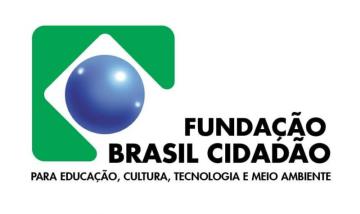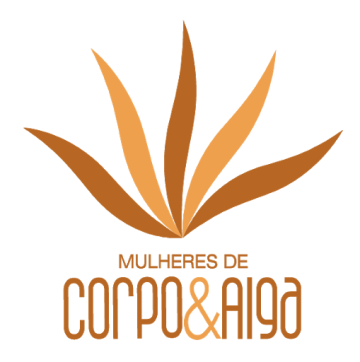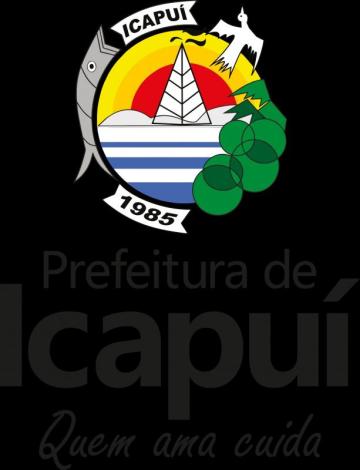
Participatory management and environmental zoning as effective tools in the preservation of the Barra Grande Mangrove".
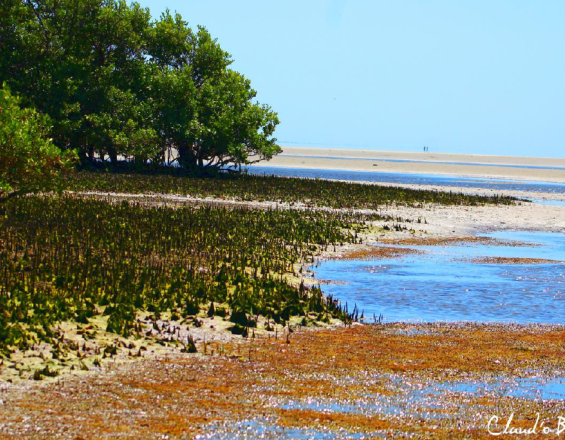
The "Manguezal de Barra Grande" protection area has suffered devastating processes with deforestation of the ecosystem, caused by human occupation, irregular constructions, salt extraction facilities, shrimp farming (shrimp breeding in captivity), polluting activities such as effluent discharge and solid waste. Thanks to the implementation of a strategy based on shared, participatory and aligned management between the community, the local public authorities and the installed companies, as well as a local public administration that is highly committed to socio-environmental responsibility, this unfortunate situation has been reversed, making this case a highly replicable model in other areas with similar circumstances.
In this way, the mangroves, caatinga, and mata atlantica have been protected, as well as several animal species.
Context
Challenges addressed
Challenges include:
- Deforestation of the mangrove ecosystem.
- Uncontrolled human settlements and occupation
- Irregular construction and/or second homes
- Salt exploration facilities and activities
- Carciniculture
- Activities that generate water pollution such as effluent spills and solid waste.
- Boats anchored on mangrove margins
- Imminent threat of species reduction/extinction
- Devastation of biodiversity
Location
Process
Summary of the process
A strengthened, supported and highly aligned governance with all the actors involved is a truly effective and powerful tool for achieving the objectives proposed in this project, especially when it is accompanied by solid alliances between the organizations and actors of this program.The algae bank, an activity that in addition to providing economic returns, has helped in the preservation and maintenance of other animal species and also in the valuation of the female gender in terms of its important role in encouraging productive and preservation activities.
The constituent elements of solutions or building blocks have been harmoniously and effectively combined in this case.
Building Blocks
APA governance strengthened by the high degree of social participation, shared, participatory and consensual management.
Decisions on land management are made respecting and taking into consideration the expectations and needs of all project stakeholders, who are key players in the preservation actions as well as in the implementation of other proposals such as sustainable fishing, community-based tourism, etc. and who in turn help the municipal bodies in their supervisory role.
It is important to mention that the licensing of activities in this area must follow a process verified by two councils: the Municipal Council for Environmental Defense (CONDEMA) and the APA Management Council.
Enabling factors
It has been very important in order to achieve the objectives, as well as to arrive at sound and convenient decisions, the fact that the decision making is controlled by both Councils, which has given a greater degree of confidence both in the decision making and in the granting of licenses to operate in the area.
Lesson learned
One of the lessons learned here is that, by seeking certain, consensual and politically unopposed decisions, the achievement of objectives becomes much more feasible and attainable than making non-aligned decisions.
Strong partnerships among stakeholders
The NGO AQUASIS, born in the Federal University of Ceará, has made a great contribution in terms of its research to prevent the extinction of animals, achieving actions of rescue and rehabilitation of marine species, has also provided information to improve the algae bank which is, in turn, food for birds.
There was a great alliance between the Prefecture of Icapuí and the municipal bodies and NGO's in order to avoid signing agreements with oil extracting companies that damage the environment, AQUASIS has also made very productive alliances with the Cooperative of local carciniculturists, for the benefit of the birds that feed on the shrimp in the area, the Mulheres de Corpo e Alga Organization has also been part of this alliance, obtaining very productive results, the Fundação Brasil Cidadão (Brazil Citizen Foundation) has also made very productive alliances with the Cooperative of local carciniculturists, for the benefit of the birds that feed on the shrimps in the area, the Mulheres de Corpo e Alga Organization has also been part of this alliance, obtaining very productive results.The Brasil Ciudadano Foundation, in terms of culture, education and technology, the Community Association of Shrimp Breeders, contributing to the social and economic strengthening sustainable with the environment, the Secretary of Education, with its interdisciplinary work, the NGO ARATU, which carries out tasks of environmental education and is strongly linked to the Prefecture, this NGO also plays a very important role in the field of community tourism.
Enabling factors
The high degree of commitment of the organizations, the community and other entities has led to solid alliances that have been maintained over time, thus facilitating the progress of the project and obtaining the current benefits.
Lesson learned
It has been learned that partnerships ensure a strong degree of involvement of all stakeholders and this is directly related to the effectiveness and achievement of objectives for the protection, preservation and conservation of environmental systems and their habitat.
Environmental zoning for a better delimitation of areas
As a tool to assist in environmental management, the zoning was carried out by the Brasil Cidadano Foundation, through the "Olho na Agua" Project, in conjunction with municipal support.
The environmental zoning has been divided into the following zones:
- Environmental preservation zone - ZPA
- Environmental conservation zone - ZCA
- Environmental Recovery Zone - ZRA
- Biodiversity Recruitment Zone - ZRB
- Village Expansion Control Zone - ZCEV
- Traditional use and fishing zone - ZUT
- Birds, Marine Boi fish and Macroalgae monitoring zone - ZMAP
- Seaweed cultivation zone - ZALGAS
Enabling factors
This generated a correct attribution of uses and activities, allowing the realization of those activities proper to each zoning, restricting activities incompatible with each zoning category.
The effectiveness of the measures taken, due to the flagrant situation caused by the companies installed there, when no more licenses were given to them to continue operating, they had no choice but to adapt to the new situation and cease their activities.
Lesson learned
- This preservation strategy implies an instrument of environmental and urban legislation, allowing at the same time a sustainable and sustainable development and displacing those activities that are harmful to the environment:
- To be an effective means to achieve a balance between environmental protection and the development of productive activities without implying a contradiction between these and conservation.
- To be a generator of work through the "Women of Body and Seaweed" Foundation. to promote the role of women and gender equality in the workplace.
- To be a tool to raise awareness that the management and preservation of natural resources is not only an exclusive task of the Conservation Units, but that it is everyone's duty to watch over the process of management and care of these areas.
- That the zoning referred to algae is an attraction for fish, lobsters, shrimps and for the so precious boi-fish, thus achieving the strengthening of these species and enriching the biodiversity of the area.
Impacts
- Recovery of 9 hectares of mangrove forest.
- Integration into the hemispheric network of reserves for migratory waders, monitoring and preservation of coastal birds.
- Declaration instituting the Boi-Marino fish as Natural Heritage of Icapui
- Limitation of potentially polluting activities resolutions and protective laws for environmental protection areas
- Creation of areas closed to construction and permanent preservation areas.
- Generation of jobs
- Increased relevance of ecological, environmental, and scenic interest.
- Encouraging community tourism, sustainable entrepreneurial activities, stimulating a sense of belonging and attitudinal changes in the communities included in the APA area.
- Creation of the Municipal Institute of Environmental Control and Permitting, which has favored control in the area.
- Protection of migratory birds
- Preservation of the Boto Cinza species (Sotalia Guianensis),
- Conservation of algae and phanerogam banks, among many other achievements of this successful project.
- Economic gains for the community, coming from the generation of jobs through the cooperative where algae-based raw material is produced for the food and cosmetics industry.
- More jobs generated by the Community Association of Shrimp Breeders, which currently has 26 associated families.
Beneficiaries
The beneficiaries are:
- The Municipality
- The local government
- The community that inhabits and obtains benefits and environmental services from the ecosystem.
- The mangrove system itself
- The ecosystem and its biodiversity
- The species that inhabit the area
Sustainable Development Goals
Story
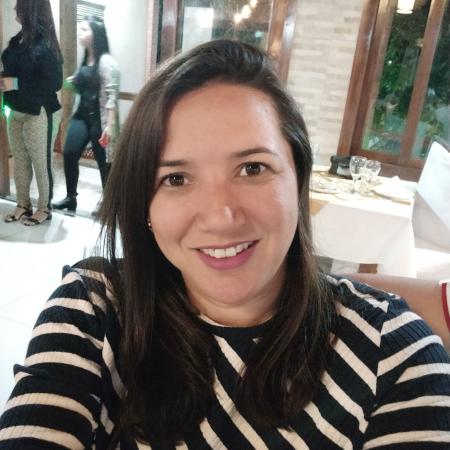
My name is Luana Rebouças, I am a technical advisor for the Environment and a member of the Management Council of APA do Manguezal da Barra Grande, representing the Municipal Secretariat of the Environment.
I think that our project has been successful due to the management model implemented, that is, a shared and transparent management, interacting and supporting the work of each one, the protagonism of the community, preservation actions, implementation of fishing proposals, tourism and other sustainable and low impact activities. I would like to emphasize that the APA is one of the municipal conservation units that includes and protects very important ecosystems for the preservation of biodiversity, water quality, and is the economic sustenance of the entire Municipality of Icapuí. It is also worth mentioning that for all the work carried out in the APA and in the municipality, we have an organizational structure and enormous support from the Municipal Environmental System, formed by a Council, the COMDEMA, an Environmental Secretariat, SEDEMA, an Environmental Fund, FUNDEMA, an Institute for Environmental Inspection and Permitting, IMFLA, and a set of laws, decrees and municipal environmental resolutions.
The objective has been achieved because the community and all the actors involved have acted in a manner consistent with the situation and have ensured the preservation and care of the APA Manguezal do Barra Grande.
The systematization of this case was carried out by the International Union for Conservation of Nature (IUCN). The case was highlighted in a call on experiences in management of Municipal Conservation Units in Brazil, conducted by ICLEI South America in 2018. For more information: http://sams.iclei.org/es/que-hacemos/proyectos-en-ejecucion/areas-protegidas-locales/brasil.html
IUCN and ICLEI's actions took place within the scope of the regional project Protected Areas and other area-based conservation measures at the local government level, and had the financial support of the Deutsche Gesellschaft für Internationale Zusammenarbeit (GIZ) GmbH. The regional project is implemented by the Ministries of Environment of Brazil, Colombia, Ecuador and Peru, and GIZ, in cooperation with ICLEI and IUCN. The regional project is supported by the German Federal Ministry for the Environment, Nature Conservation and Nuclear Safety (BMU) within the scope of the International Climate Initiative (IKI).

